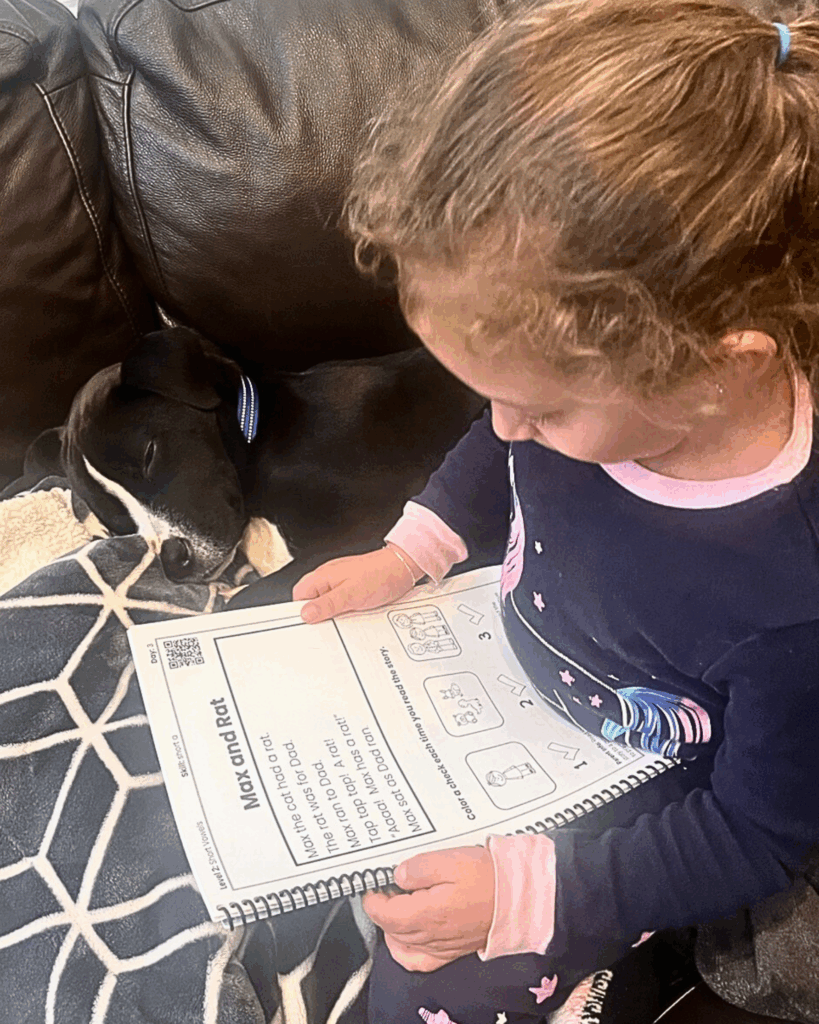Reading isn’t just about sounding out words. More importantly, it is about understanding what those words mean. When children comprehend what they read, they connect with characters, make sense of the story, and view reading as an enjoyable experience. Reading comprehension is the ultimate goal!
If your child is still learning how to read, you might be wondering:
“How can I make sure my child understands what they read?”
or
“How can I help them better understand what they read?”
The good news is that you don’t need to be a teacher to help your child strengthen their comprehension. Today, we are sharing 6 simple ways you can support your child’s reading comprehension at home.
6 Ways to Support Your Child’s Reading Comprehension
1. Model Thinking While You Read Together
One of the best ways to teach comprehension is to show your child what it looks like to think while reading.
Try this:
- Pause while reading aloud and say things like:
- “Hmm… I wonder what will happen next.”
- “This reminds me of when we went to the zoo.”
- “I didn’t understand that part, so I’m going to reread it.”
- “Hmm… I wonder what will happen next.”

These “think-alouds” model strategies your child can use on their own later.
Some helpful thinking strategies include:
- Asking questions during reading
- Making predictions about what will happen next
- Connecting the story to real-life experiences
- Visualizing what’s happening
- Rereading the text when something doesn’t make sense
2. Build Your Child’s Background Knowledge Before Reading
Children understand more when they’re familiar with the topic. Before reading a new book, take a moment to preview:
- Unfamiliar vocabulary
- Settings may not be familiar with
- Key concepts or themes

For example, if a book takes place in a desert and your child has never seen one, take a minute to look at photos together and talk about what they might see or feel in that setting. This small step can make a big difference in how much they understand.
3. Make Sure They’re Reading Books They Can Handle
A good-fit book builds confidence and comprehension. If your child is stopping to figure out every few words, they’re likely losing the meaning of the story.
Research shows that decodable texts are best for children who are still learning to decode words. A decodable reader is a special type of early reading book that uses only the phonics skills and high-frequency words your child has already been explicitly taught. Decodable texts allow students to apply the phonics lessons to their independent reading. We know that this application is how new learning sticks!

Save more challenging books for read-aloud time, when you can guide them and talk about the story together.
4. Encourage Rereading
Repeated reading or rereading is key to reading comprehension. The first time through, your child may solely focus on decoding the words. The second or third time, they can focus on what the text actually says.
Choose short, decodable books or passages they’ve already read and invite them to read it again with a new focus:
- “This time, let’s pay attention to how the character is feeling.”
- “Can you find out what problem they’re trying to solve?”
5. Talk About the Book Together
One of the easiest and most effective ways to boost reading comprehension? Just talk about the story.
After reading, ask open-ended questions like:
- “What was your favorite part?”
- “Why do you think the character did that?”
- “What do you think will happen next?”
These conversations help your child practice retelling, predicting, and explaining. All of these are key comprehension skills.
6. Invite Them to Write or Draw About What They Read
Writing (or drawing) about a book helps your child organize their thoughts and show what they understood.

Here are some easy ideas:
- Have them draw a picture of their favorite part and tell you why they chose it.
- Ask them to write a sentence about what happened first, next, and last.
- Create a simple reading response journal where they can write or illustrate their thoughts after reading.
These kinds of responses deepen comprehension and support early writing skills.
At Sure Start Reading, we believe every child deserves the tools to become a confident, skilled reader. They need explicit instruction in letter-sound relationships, as well as support in developing comprehension skills that bring the words to life. We hope the information we shared today will help you feel better prepared to support your child in their journey to becoming a skilled reader!